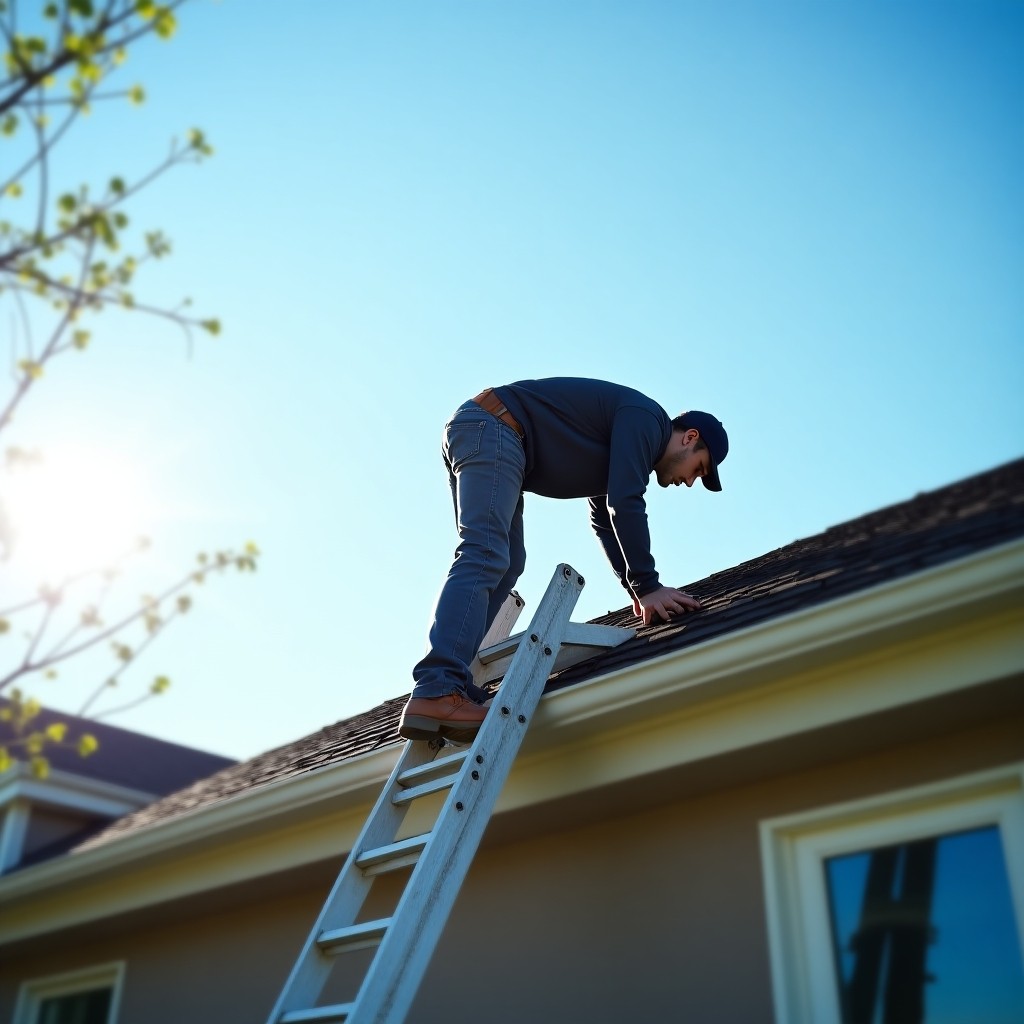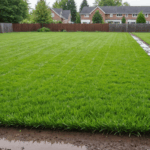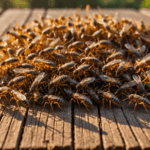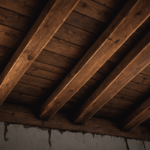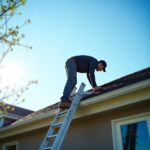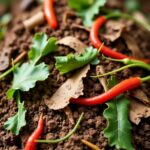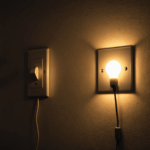As we step into 2025, the importance of regular home upkeep continues to grow, and for homeowners, prioritizing roof inspection and repair is critical. The roof serves as the first line of defense against harsh weather elements, and ensuring its integrity can prevent costly issues down the road. According to a report by the National Roofing Contractors Association, regular inspections can extend the life of a roof by up to 50%, making it a crucial component of any annual home maintenance checklist.
Every homeowner should prioritize a thorough roof inspection at least once a year. This task is not just about spotting visible damage; it’s about preventing potentially devastating complications like water leaks, mold growth, and compromised structural integrity. Surprisingly, the Insurance Information Institute notes that one in every 50 homes reports a claim for damage caused by water, which often starts with a roofing issue. By being proactive, homeowners can avoid being part of this statistic.
During an inspection, homeowners should look for common signs of wear and tear, such as missing or damaged shingles, sagging areas, and the accumulation of debris in gutters. While some issues might be noticeable to the untrained eye, hiring a professional can uncover hidden weaknesses such as granule loss, damaged flashing, or subtle structural issues. According to Goldstein Roofing Company, catching these problems early can save homeowners thousands of dollars in repairs.
Expert opinions stress the significance of incorporating roofing tasks into a structured annual maintenance schedule. Glen Bell, a seasoned roofing contractor with over 20 years of experience, advises, “A roof isn’t just a protective layer; it’s a crucial part of your home’s structure. Failure to inspect and repair can lead to water infiltration, undermine home safety, and decrease property value.” Bell recommends including professional inspections in your homeowner tips, particularly before and after intense weather seasons, to ensure you’re catching problems early.
Moreover, for those concerned about energy efficiency, maintaining a healthy roof can aid in reducing heating and cooling costs. A well-insulated and intact roof minimizes energy loss, contributing to lower utility bills and a smaller carbon footprint. The U.S. Department of Energy states that a cool roof can reduce energy bills by up to 15% by reflecting more sunlight and absorbing less heat than a standard roof, making roof maintenance not just a matter of safety, but also one of financial savvy.
Ultimately, maintaining the integrity of your roof is an investment in the longevity and safety of your home. By adding roof inspections to your home maintenance list, homeowners can ensure that their most significant asset is protected from the elements, reducing the likelihood of expensive repairs and contributing to the overall value and comfort of their home.
HVAC system maintenance
As we look toward the 2025 agenda for home maintenance, ensuring the effective operation of your HVAC system is paramount. This complex system manages air quality and temperature, significantly influencing the comfort and energy efficiency of your home. A malfunctioning HVAC system can lead to higher energy bills, decreased home comfort, and potential health risks due to poor air quality. Experts suggest that with regular maintenance, homeowners can enhance performance, prolong the system’s life, and avert sudden breakdowns.
Regular HVAC system maintenance should be an integral part of every homeowner’s annual checklist. The system typically operates year-round, from providing cozy warmth during the winter to cool relief in the summer. To maintain its efficiency and dependability, focus on routine tasks such as replacing air filters every 1-3 months, checking refrigerant levels, and cleaning the coils. Neglecting these tasks can increase strain on the system, leading to increased energy consumption and costly repairs.
Moreover, incorporating professional servicing into your home maintenance routine is crucial. Certified HVAC technicians can conduct comprehensive inspections, identify minor issues before they escalate, and ensure all components, including thermostats, ducts, and vents, are functioning optimally. Regular professional checks not only improve system efficiency but can also help maintain the equipment warranty, avoiding potential out-of-pocket expenses for repairs.
Energy efficiency is an important consideration for HVAC maintenance, as outdated or poorly maintained systems can significantly drain energy resources. Retrofitting existing equipment with energy-efficient components or upgrading to a newer system with higher SEER ratings can offer substantial savings on energy bills, making it a practical investment.
To help streamline HVAC system maintenance, consider these practical homeowner tips:
- Check and replace air filters every 1-3 months to enhance airflow and indoor air quality.
- Schedule bi-annual professional inspections to address any wear and tear, especially before heating or cooling seasons.
- Ensure vents and registers are unobstructed by furniture or drapes to promote efficient airflow.
- Seal any leaks in ductwork to prevent energy loss and improve energy efficiency.
- Consider upgrading to a programmable or smart thermostat for more precise temperature control and energy management.
Incorporating these HVAC maintenance tasks into your homeowner tips can lead to a more comfortable living environment while saving on energy costs and extending the lifespan of your system. Through proactive care, you can ensure that your HVAC unit continues to function efficiently and reliably for years to come.
Plumbing checks and updates
When considering home maintenance, plumbing checks and updates are vital for preventing water damage and ensuring the smooth operation of your home’s water supply and waste systems. Common mistakes in this area often stem from neglect, leading to costly and inconvenient issues. A well-thought-out annual checklist that includes comprehensive plumbing inspections can protect your home from these disruptions.
One frequent oversight is ignoring minor leaks, such as those in sinks or toilets. Homeowners may consider these leaks insignificant, but they can lead to significant water waste and increased utility bills. Also, over time, small leaks increase humidity levels, posing a risk for mold growth. Homeowners should periodically inspect faucets, showers, and toilets for drips, and address any visible leaks immediately. Applying simple fixes, such as replacing worn-out washers or tightening connections, can make a substantial difference.
Clogged drains are another common pitfall. Many homeowners use chemicals as a quick fix, unaware that these can damage pipes over time. Instead, use mechanical methods such as plungers or drain snakes to clear blockages. Prevent clogs from forming by using strainers to catch food waste, hair, and other debris. Regularly flushing drains with hot water or baking soda and vinegar can also keep them clear.
Water heater maintenance is often neglected, yet it is crucial for prolonging the appliance’s lifespan and ensuring its efficiency. Common mistakes include ignoring the need for annual professional inspections and failing to flush the tank to remove sediment buildup. Flushing your water heater annually prevents sediment from accumulating, which can cause inefficiency and eventual system failure. Adjusting the thermostat to around 120 degrees Fahrenheit can also reduce energy consumption and prevent scalding.
Lastly, outdated plumbing fixtures and pipes pose a risk in older homes, often leading to leaks and water quality issues. Homeowners should consider updating old galvanized pipes to modern materials like PEX or copper. Upgrading plumbing fixtures ensures compliance with current standards and can improve water efficiency.
Incorporating plumbing checks and updates into your list of homeowner tips not only supports the integrity of your home’s water systems but also contributes to energy savings and environmental responsibility. By addressing these potential issues through regular inspections and updates, homeowners can maintain the safety, efficiency, and reliability of their plumbing systems for years to come.
Electrical system safety
Ensuring the safety of your electrical system is a crucial aspect of home maintenance that should not be overlooked in your annual checklist. A well-maintained electrical system not only enhances the efficiency of your household but also significantly reduces the risk of electrical hazards. Homeowners should be proactive in checking for both visible and hidden electrical issues to safeguard their homes against potential fires and electrical failures.
Begin by inspecting the condition of your electrical outlets and switches. Replace any that are warm to the touch or exhibit signs of discoloration, as these may indicate problems with the wiring inside. It’s also advisable to check that all outlets, particularly those in areas prone to moisture like kitchens and bathrooms, are equipped with Ground Fault Circuit Interrupters (GFCIs). These are crucial in preventing electric shocks and enhance overall home safety.
Another essential task is to inspect the circuit breaker panel. A telltale sign of electrical issues is frequently tripped circuit breakers, which might indicate overloaded circuits or faulty appliances. Ensuring labels on the circuit panel are clear and updating any outdated labels can help in managing circuits more effectively, especially in emergency situations. Make sure these tasks are integrated into your homeowner tips to streamline electrical maintenance efforts within your household.
Do not underestimate the importance of professional electrical inspections as part of your home maintenance routine. Licensed electricians can perform comprehensive safety assessments that go beyond surface issues. They can identify outdated wiring or potentially hazardous connections that might be missed during a casual inspection. This is particularly important for older homes where wiring systems can degrade over time.
For homeowners seeking to improve their home’s energy efficiency, consider replacing traditional bulbs with energy-efficient LEDs and investing in smart technology such as programmable thermostats or smart home systems to monitor energy use. Implementing such upgrades not only cuts down on energy costs but also modernizes home infrastructure, making it safer and more efficient.
Incorporating these electrical system checks and updates into your annual checklist will ensure your home remains safe and efficient. Remember, preventing issues is always better than dealing with their aftermath. Use these homeowner tips as a guide to protect your home from potential electrical hazards and to foster a safer, more energy-efficient living environment. Stay motivated and proactive, knowing that your dedication today will maintain the safety and value of your home for years to come.
Seasonal landscaping care
Delving into home maintenance for 2025, seasonal landscaping care emerges as a critical focus for homeowners aiming to preserve the aesthetic appeal and functionality of their outdoor spaces. Regular attention to landscaping tasks helps maintain property value, ensures the health of plants, and contributes to overall home energy efficiency. By incorporating comprehensive landscaping practices into your annual checklist, you not only enhance curb appeal but also bolster the resilience of your home’s exterior against seasonal elements.
Start by assessing the condition of your lawn. This involves regular mowing to keep grass at an optimal height, which promotes root health and discourages weeds. Aerating your lawn is equally essential, as it improves soil structure, allowing water and nutrients to reach roots more effectively. Address any patches of brown grass early in the season to ensure even growth throughout the year.
Pruning is another key task in seasonal landscaping care. By trimming back dead or overgrown branches, you prevent disease spread and improve the appearance and yield of flowering plants and shrubs. It’s ideal to prune just before the spring growth phase, allowing plants to heal and flourish when growing conditions are optimal. Be considerate of plant types and their specific seasonal care needs, ensuring each species is pruned at the right time to promote healthy growth.
Incorporate mulching into your routine for added protection and nourishment of plant beds. Mulch helps retain soil moisture, suppresses weed growth, and provides essential nutrients as it breaks down. Select high-quality organic mulch, which will enrich the soil over time and enhance plant vitality. This seemingly simple homeowner tip can drastically improve the health and resilience of your garden.
Evaluate the efficiency of your irrigation system. An efficient system saves water and reduces utility costs while ensuring your garden receives the right amount of hydration. Check for leaks or blockages in hoses and drip systems regularly, and adjust sprinklers to prevent overwatering in certain areas. Consider upgrading to a smart irrigation system that adjusts watering schedules based on weather patterns and soil moisture levels, optimizing water use and minimizing waste.
Lastly, address hardscape elements like walkways, patios, and decks. Regular cleaning and minor repairs, such as power-washing surfaces and resealing wood, help prevent long-term structural damage and enhance outdoor living spaces. Consider integrating these proactive strategies into your homeowner tips so that your seasonal landscaping remains both beautiful and functional throughout the year.
- What are the most important tasks for seasonal landscaping care?
- Key tasks include lawn mowing and aeration, pruning plants, applying mulch, checking irrigation systems, and maintaining hardscape features like walkways and patios. Regular attention to these areas ensures the health and appearance of your outdoor space and can enhance property value.
- How often should I water my garden?
- The frequency of watering depends on the climate and the specific needs of your plants. Generally, a deep watering once a week is sufficient, but always check soil moisture levels to avoid overwatering. Consider implementing a smart irrigation system that adjusts to weather conditions.
- Why is pruning important, and when should it be done?
- Pruning is essential for removing dead or diseased branches, encouraging healthy growth, and improving plant shape and yield. It is best performed before the active growing season, usually late winter or early spring, depending on the plant species.
- How can I make my landscaping more eco-friendly?
- Adopt eco-friendly practices such as using organic mulches, opting for native plants that require less water and chemical intervention, and installing a rainwater collection system for irrigation. These practices support sustainable landscape management and reduce ecological footprints.
- What are some signs that my irrigation system needs maintenance?
- Signs include inconsistent water coverage, pooling water, brown patches of grass, and increased water bills. Regular checks for leaks, clogs, and proper water pressure ensure the system operates efficiently, conserving water and supporting healthy landscape growth.
